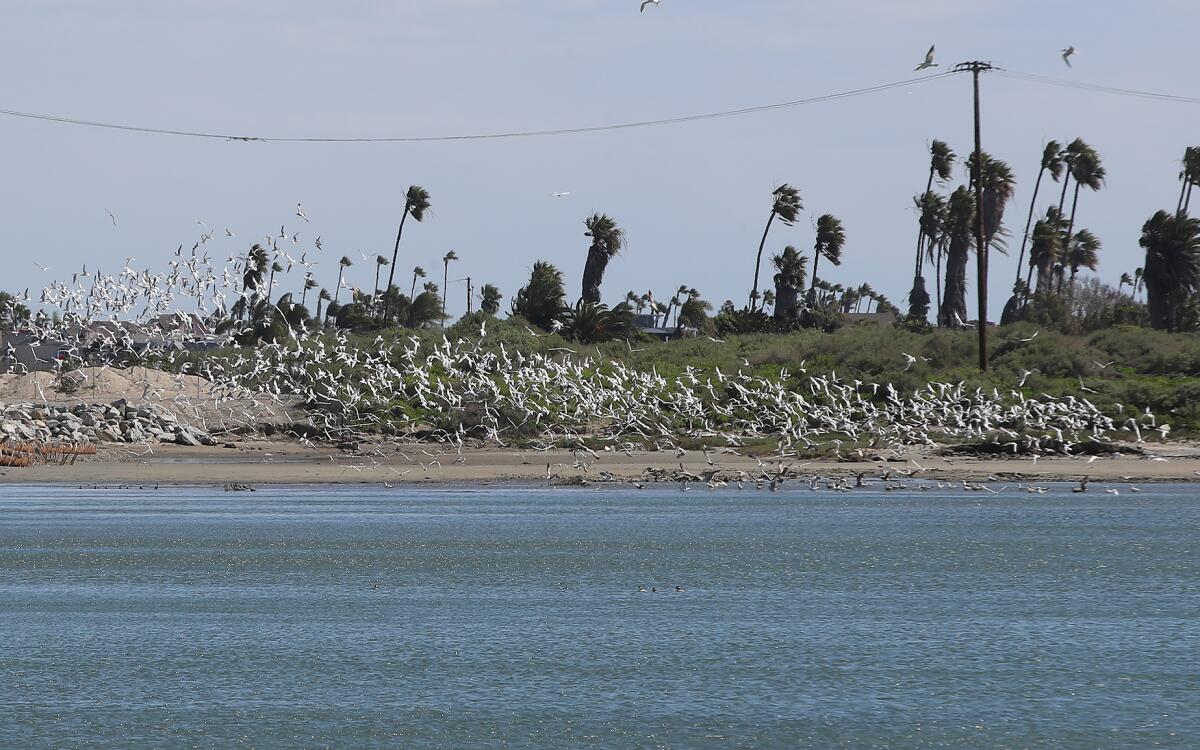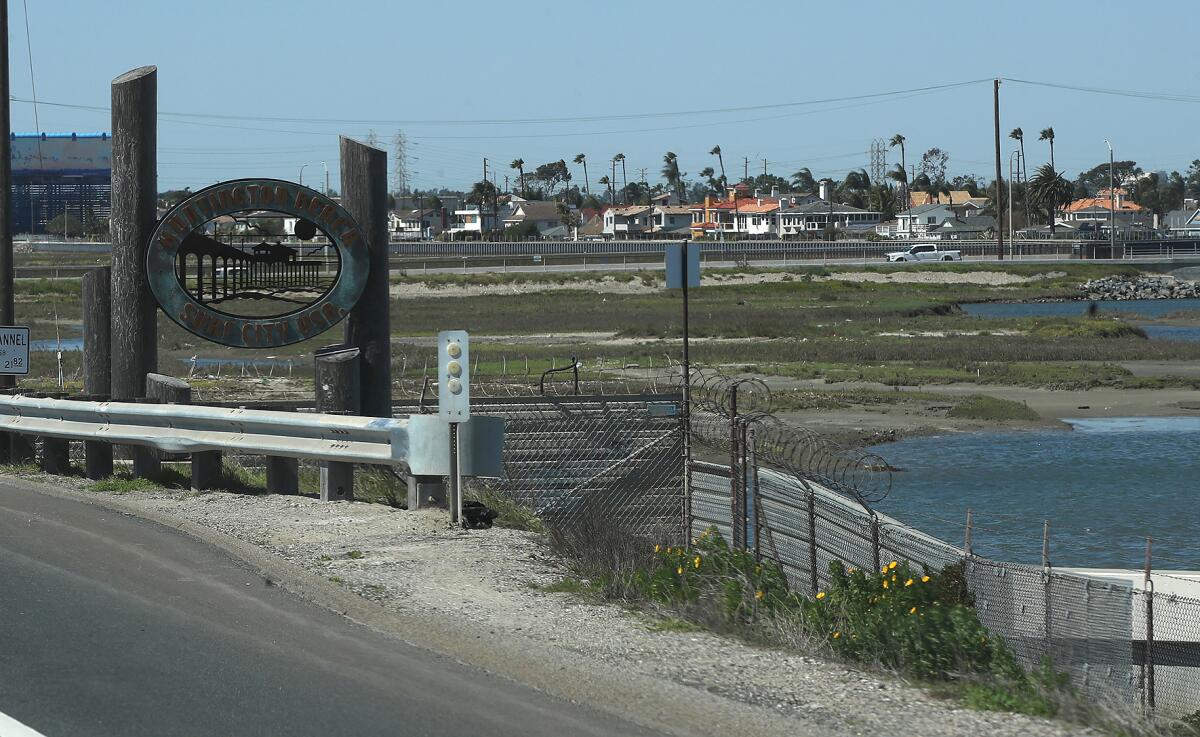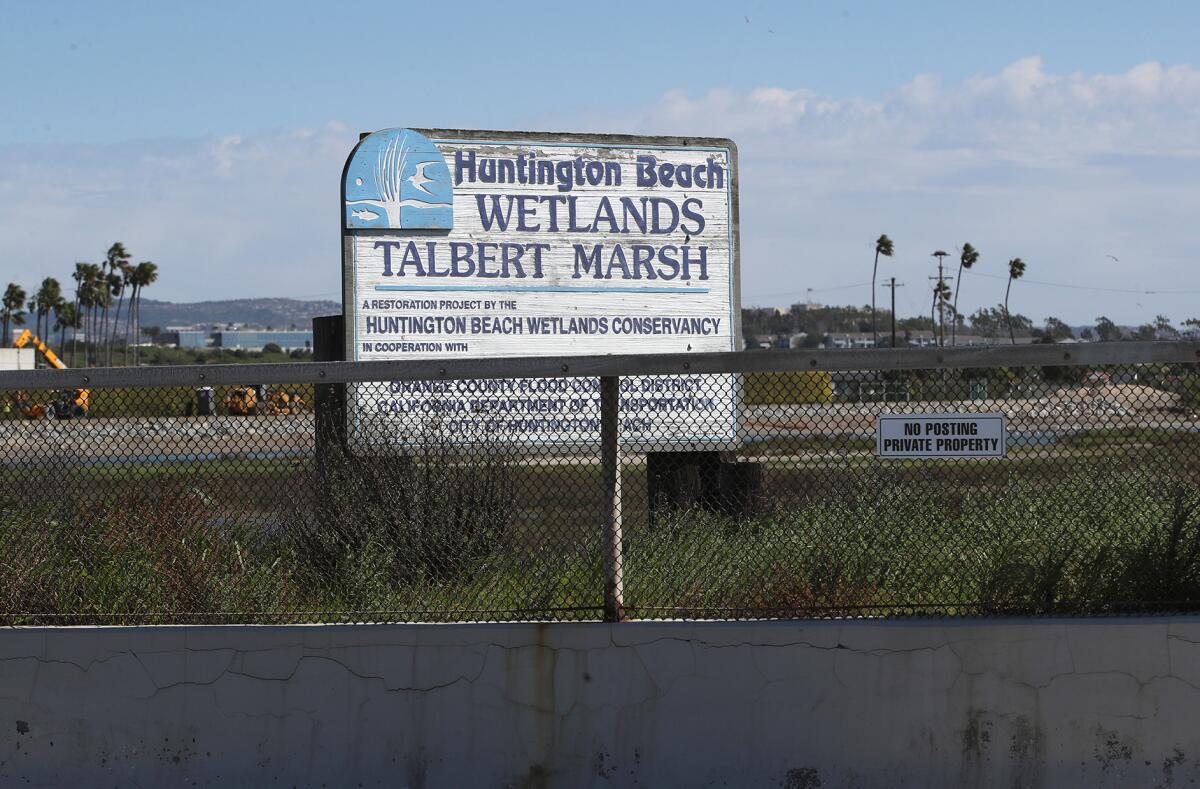Coastal Commission approves Talbert Marsh restoration project

- Share via
A restoration project at Talbert Marsh got the go-ahead Thursday after the state Coastal Commission approved a coastal permit application submitted by the Huntington Beach Wetlands Conservancy as part of its consent calendar.
The roughly 25 acres of Talbert Marsh stretch between Brookhurst Street to the Santa Ana River Trail and make up one of four wetlands the nonprofit owns and maintains. More than 90 bird species have been observed at the marsh in addition to the adjoining wetlands, according to the organization.
The project along the southeastern and western shorelines of South Island will address erosion, which Coastal Commission staff said causes the disappearance of coastal salt marsh vegetation and depletes refuge spaces for sensitive bird species that live there.
If left unaddressed, the erosion could continue into the shorelines and impact other habitat, according to commission staff.

Huntington Beach Wetlands Conservancy executive president John Villa said Friday the erosion is beginning to creep toward one of two electrical poles on the property and will eventually cause it to topple. But more than that, he said, Talbert Marsh is beginning to lose its shorelines.
“We’d be losing our sandy areas, and we want to reverse that because we’re directly across from a California least tern preserve. We also have the Western snowy plovers that come into our marsh, so we’re trying to restore habitat for those species,” said Villa, who noted that both have been threatened by human activity.

Expected to begin in the fall after the end of nesting season for several species, the project will restore a “living shoreline” in an effort to reduce the amount of erosion and potentially reverse it. That includes the placement of fill, sediment retention devices and the planting of vegetation sourced from within the Huntington Beach Wetlands Complex — the Talbert, Brookhurst and Talbert marshes.
No heavy machinery will be used, and the work is expected to be completed within a few months of starting, Villa said.

As part of the approvals, the Coastal Commission is requiring the nonprofit to use biodegradable materials in the fill, maintain a physical monitoring plan and use sediment consistent with federal Screening Quick Reference Tables (SQUIRT) guidelines. The use of on-site sand dunes as fill material will not be allowed, and the size of rocks will also be limited, according to the staff report.
The project is being funded by AES Southland, managed by the California Energy Commission, U.S. Fish and Wildlife and United Parcel Services, the nonprofit said. The work is engineered by Moffatt & Nichol.
“It’s taken a while, but that wasn’t the Coastal Commission’s fault,” said Villa, who added issues on the Huntington Beach Wetlands Conservancy’s part came up during the application process. “They’ve worked really well with us. We’ve had the usual bantering back and forth on the project, and we’re really happy with the process.”
All the latest on Orange County from Orange County.
Get our free TimesOC newsletter.
You may occasionally receive promotional content from the Daily Pilot.




